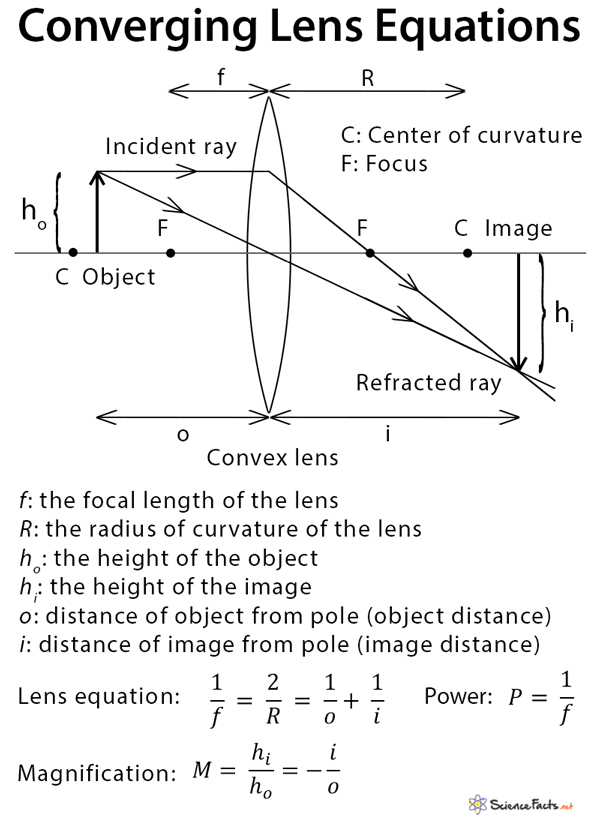Converging Lens
Definition: What is a Converging Lens?
A converging lens is an optical lens that converges all rays of light passing through it. The primary purpose of a converging lens is to focus the incoming rays from an object and converge them to form an image. The image can be magnified, diminished, or remain the same depending on the distance of the object from the lens. In many optical systems, converging lenses are used to get a better view of the object.
Source: Amazon.com
Converging Lens Ray Diagram
Terms Used in Converging Lens Ray Diagram
- Incident ray: The ray of light that is incident on the surface of the lens
- Refracted ray: The ray of light that is refracted by the lens
- Center of curvature: The center of the sphere from which the convex lens has been constructed
- Radius of curvature: The radius of the sphere from which the convex lens has been constructed
- Pole: The mid-point of the convex lens
- Principal axis: An imaginary line that connects the pole and the center of curvature
- Focus: A point on the principal axis where rays of light parallel to the axis converge after refraction
- Focal length: The distance between the pole and the focus and is one-half of the radius of curvature
- Object distance: The distance between the object and the pole
- Image distance: The distance between the image and the pole
- Magnification: The ratio of the image size to the object size
In order to draw a ray diagram, take two rays of light from the object.
Ray 1: A ray parallel to the principal axis
Ray 2: A ray passing through the pole
After reaching the lens, ray 1 will bend and pass through the focus. Ray 2 will pass without any deviation. The two rays will converge at a point and recreate an image. The position and magnification of the image will depend on the position of the object. A converging lens can produce both real and virtual images.
Differences Between Converging Lens and Diverging Lens
Converging Lens vs. Diverging Lens | |
| Converging Lens | Diverging Lens |
| It is thicker at the middle but thinner at the edges | It is thinner at the middle but bulging near the boundaries |
| It has a focusing action | It diverges a beam of light |
| It can produce both real and virtual images depending on the position of the object | It produces a virtual image for all positions of the object |
| It can produce both diminished and magnified images depending upon the position of the object | It always produces diminished images irrespective of the position of the object |
| Also known as a convex lens | Also known as a concave lens |
| Image may be inverted or upright | Image is always upright |
Converging Lens Equation
We assume that the lens is thin. Otherwise, a thick lens can cause aberration.
Applications of Converging Lens
Converging lenses are used in a magnifying glass, eyeglasses (for farsightedness), cameras, and microscope. For example, a magnifying glass produces an image that is upright, magnified, and virtual if the object is at or within the focal length of the lens. Likewise, eyeglasses are used to correct vision by ensuring that the light is focused on the retina instead of behind it.
Article was last reviewed on Tuesday, July 7, 2020











